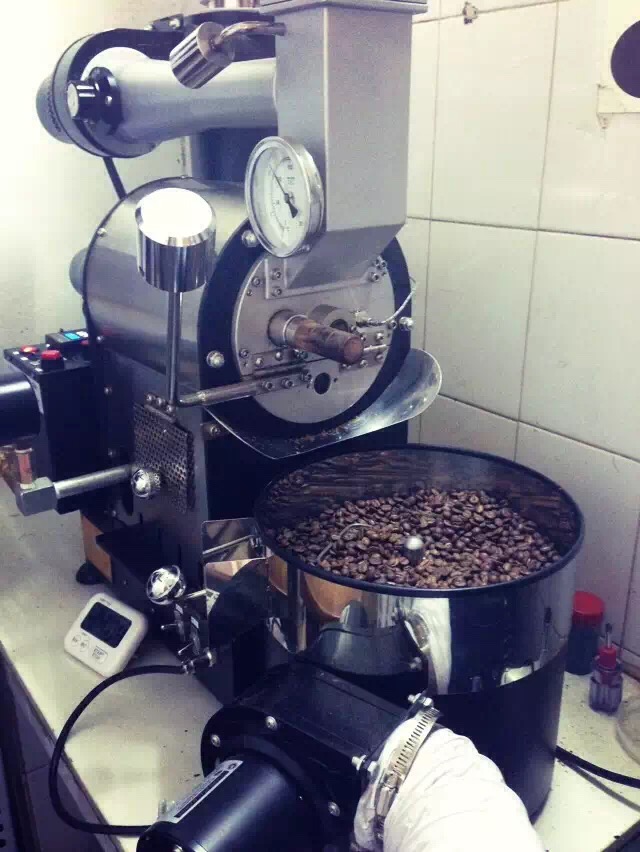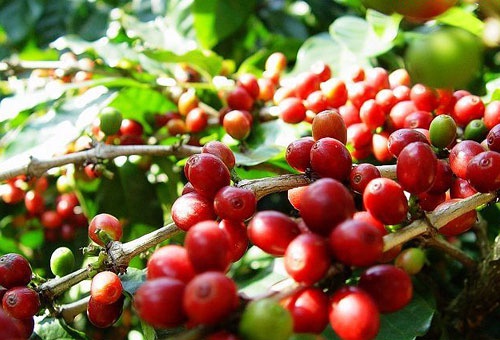Briefly introduce the purpose and method of baking.
Generally speaking, each coffee cherry contains two raw beans, and the fragrance is still hidden, waiting to be discovered. In raw beans, it contains a lot of chloric acid. As the baking process, chloric acid will gradually disappear, releasing familiar and pleasant fruit acid-such as acetic acid, citric acid, malic acid in wine. Baking is just right to present these beautiful sour tastes in moderation; on the contrary, if they are baked too much, they will be completely covered up. It is written in a book about coffee that "80% of the taste of coffee is determined by roasting companions." We don't know how this percentage is calculated, but the importance of roasting in coffee production is not exaggerated.
Roasting, as the name implies, is to provide heat to coffee beans, and to produce chemical changes in the internal structure of coffee beans by heating, that is, heating converts starch in raw beans into sugars or acids at high temperature. substances such as cellulose will be carbonized to varying degrees by carbon, water and carbon dioxide will be evaporated, proteins will be converted into enzymes, and the remaining substances of fat will be combined. An oil film is formed on the surface of coffee beans.
The main purpose of baking is to produce this aromatic oil, which is called coffee oil, or, more accurately, coffee oil, which gives coffee beans a strong aroma. This aromatic oil is volatile, that is, it is the main factor that brings flavor and fragrance, and they can accommodate water, which means that people can enjoy it in a cup.
Baking must be uniform, the most important thing is to be able to stir-fry the beans evenly inside and outside. At first, the water in the coffee beans will be discharged smoothly with fire, if only fast and uneven is required, it may cause the beans to have a beautiful appearance but a light internal color, and has not yet begun to decompose. The deep, medium and shallow companionship of beans during baking is decided and controlled by people, and even there is a trick to cool the beans before the baking is over. if the temperature does not drop quickly, the heat contained in the beans will make the beans darker and greasy, and the taste will become bitter.
Roasted coffee beans swell, a bit like popcorn, and crackle during baking, just as we make popcorn in a microwave oven. But because the skin on the surface of coffee beans is very tough, we usually don't see coffee beans crack like popcorn.
The color of roasted coffee beans changes from light green to brown, which can change the unique color, amber, flavor and aroma, as well as volatilize the sour, sweet, bitter, mellow and fragrant five obvious taste characteristics of coffee. Roasted coffee beans become larger and swollen, with uniform gloss and different flavors.
The baking of brown beans can be divided into shallow baking according to the degree of baking. Moderate baking. There are three categories of deep baking. Generally speaking, the light baking color is lighter, the sour taste is strong, and it has a unique flavor. The deep baking color is darker, the deeper the sour taste is, and the more bitter it is, but the scorched smell of baking makes the aroma more intense.
The only common term among coffee bakers is bottom, medium, and deep. Or sometimes use light, medium and black, which have different meanings for different kinds of coffee.

Important Notice :
前街咖啡 FrontStreet Coffee has moved to new addredd:
FrontStreet Coffee Address: 315,Donghua East Road,GuangZhou
Tel:020 38364473
- Prev

Learn coffee etiquette-make you a cultured person
Coffee etiquette 1 correct posture for holding a coffee cup: in a western restaurant, coffee is often drunk after a meal, serving half as much as ordinary coffee. And the cup that holds the coffee, the ear of the cup is very small, the finger cannot pass through. The correct way to hold it is to pick up the cup with your index finger and thumb. When the waiter serves coffee, be sure to point the ear of the cup to the left of the customer so that the customer can hold the ear with sugar and milk
- Next

What is the method of secret processing of coffee beans?
A few years ago, a fad of expensive Indonesian Kopi Luwak introduced domestic consumers to the concept of diversified production technologies for boutique coffee, and then the emergence of sparrow shit coffee in Brazil and shit coffee in Thailand was a bit like an odd coffee zoo war. When it comes to the new stars in the production process of boutique coffee, honey treatment has to be mentioned. At the WSC contest, which is known as the Coffee World Cup
Related
- What is the meaning of lactic acid fermentation with coffee bean treatment?
- How to judge the state of foam by sound?
- How does the latte pull out the unicorn pattern? Come to get for a little trick to improve the flower pull!
- Will flower pulling affect the taste of the latte?
- Do you know the history of coffee?
- The difference between honey treatment and sun washing what is raisin honey treatment?
- What kind of milk can a novice use to make coffee foam to keep the foam longer? The correct method and skills of milking tutorial sharing
- Why do washed coffee beans taste sour? Flavor characteristics of washed Coffee
- Introduction to the skill of how to practice the size and height of water injection around the circle of hand-brewed coffee
- How do beginners practice coffee flower drawing from scratch?

